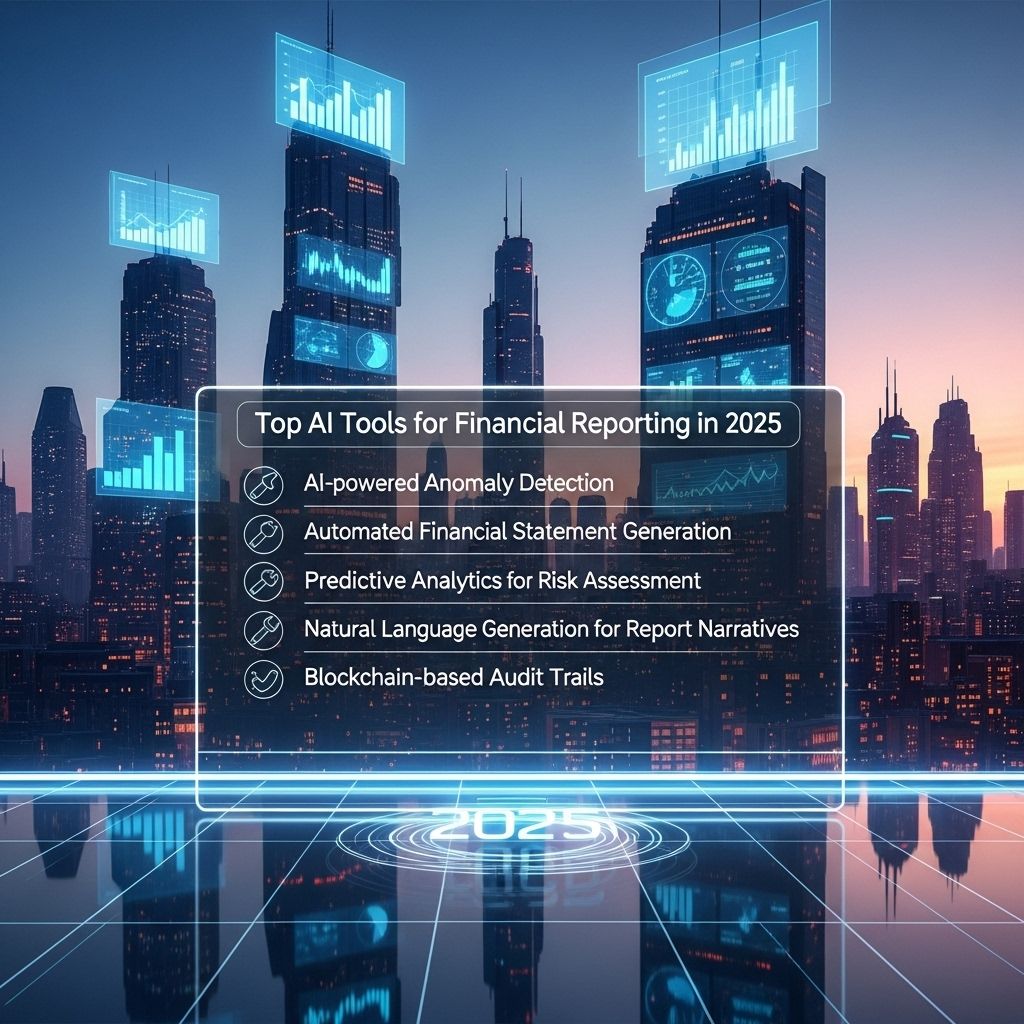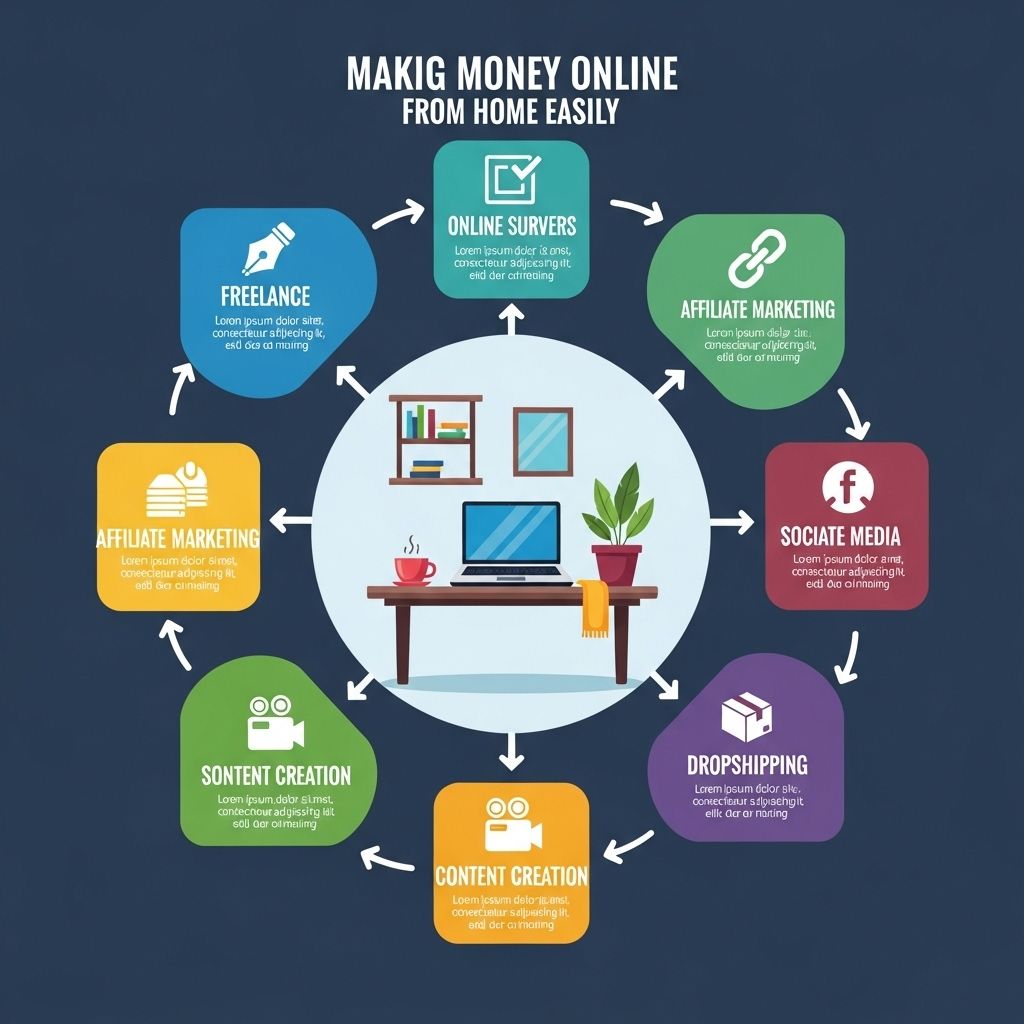Top AI Tools for Financial Reporting in 2025
Discover the leading AI tools transforming financial reporting in 2025. Streamline your processes and improve accuracy with these innovative solutions.

As we move further into the digital age, the integration of artificial intelligence in financial reporting is transforming the landscape of finance and accounting. Organizations are leveraging AI tools to enhance their reporting accuracy, speed, and efficiency. In 2025, we can expect a surge in the adoption of advanced AI technologies that not only simplify financial reporting processes but also provide deeper insights into financial data. This article delves into influential AI tools that are set to revolutionize financial reporting in 2025.
Table of Contents
Understanding the Importance of AI in Financial Reporting
The financial sector is increasingly reliant on real-time data analysis and reporting. Traditional methods of financial reporting can be time-consuming and prone to errors. AI tools address these challenges by:
- Automating routine tasks, allowing finance teams to focus on strategic decision-making.
- Enhancing data accuracy through machine learning algorithms that learn from historical data.
- Providing predictive analytics that help in forecasting and budgeting.
- Improving compliance by ensuring adherence to regulations through constant monitoring.
Key Features of AI Tools for Financial Reporting
When evaluating AI tools for financial reporting, certain features stand out as essential for organizations:
- Data Integration: Seamless integration with existing accounting software and databases.
- Natural Language Processing: The ability to interpret and generate human-like text for report generation.
- Predictive Analytics: Tools that can forecast future performance based on historical data.
- Real-time Reporting: Providing insights and reports on demand.
- Compliance Monitoring: Features that ensure adherence to financial regulations and standards.
Top AI Tools to Watch in 2025
1. IBM Watson Analytics
IBM Watson has long been a leader in AI technology, and its analytics platform for financial reporting is no exception. Utilizing advanced machine learning, Watson Analytics helps businesses gain insights from their data with minimum effort.
Key Features:
- Self-service data visualizations
- Natural language queries
- Predictive modeling capabilities
2. Tableau
Tableau is renowned for its data visualization capabilities, but it has increasingly incorporated AI elements to enhance financial reporting. By marrying AI with its powerful visualization tools, Tableau allows companies to parse through large amounts of data quickly and efficiently.
Key Features:
- Smart data preparation features
- AI-driven insights through Tableau’s ‘Explain Data’ feature
- Integration with various data sources
3. Adaptive Insights
Adaptive Insights focuses specifically on financial planning and analysis (FP&A). Its cloud-based platform utilizes AI to automate complex reporting processes, which can significantly reduce the time spent on financial reporting.
Key Features:
- Forecasting and budgeting tools powered by AI
- Collaboration features for finance teams
- Flexible reporting options
4. Anaplan
Anaplan’s platform is built for business planning across various functions, including finance. Its AI capabilities help businesses model their financial scenarios and generate reports that provide a comprehensive view of their financial health.
Key Features:
- Real-time collaboration and reporting
- Scenario modeling capabilities
- Integration with other financial systems
5. Xero
Xero, a popular accounting software, has introduced AI-driven features to streamline financial reporting for small and medium-sized businesses. Its intuitive interface combined with AI capabilities makes it an excellent choice for those looking to enhance their financial reporting without extensive training.
Key Features:
- Automated reconciliations
- Real-time financial dashboards
- Collaboration features for teams
Comparative Analysis of AI Tools
| Tool | Best For | Unique Feature |
|---|---|---|
| IBM Watson Analytics | Larger enterprises needing deep insights | Natural language processing for query |
| Tableau | Data visualization and analytics | Explain Data feature |
| Adaptive Insights | FP&A specific needs | AI forecasting tools |
| Anaplan | Integrated business planning | Scenario modeling |
| Xero | Small to medium businesses | Automated reconciliations |
Implementation Strategies for AI Tools
Adopting AI tools can be a transformative experience, but successful implementation requires strategic planning. Here are essential steps to consider:
1. Assess Your Current Systems
Before integrating AI tools, evaluate your existing systems and processes. Identify pain points in your financial reporting that AI could address.
2. Define Clear Objectives
Establish what you aim to achieve with the new AI tools. Whether it’s reducing reporting time, enhancing accuracy, or improving compliance, having clear goals will guide your implementation.
3. Train Your Team
Invest in proper training for your finance team. Familiarity with the tools will ensure that they can leverage AI effectively.
4. Monitor and Adjust
After implementation, continuously monitor the performance of the AI tools. Be prepared to adjust your strategies based on feedback and results.
Future Trends in AI for Financial Reporting
Looking ahead, several trends are poised to shape the development of AI tools in financial reporting:
- Increased Use of Blockchain: The integration of AI with blockchain technology will enhance transparency and security in financial transactions.
- Enhanced Predictive Analytics: AI will continue to improve in its predictive capabilities, allowing for more accurate forecasting.
- Greater Focus on Ethical AI: As AI becomes more prevalent, ensuring ethical considerations in AI algorithms will be crucial.
- Integration with IoT: As the Internet of Things (IoT) expands, real-time data from various sources will be leveraged in financial reporting.
In conclusion, the future of financial reporting is undeniably intertwined with advancements in AI technology. By adopting these tools, organizations can streamline their reporting processes and gain valuable insights that contribute to better decision-making. The tools highlighted in this article are just a glimpse of what the future holds for AI in financial reporting, paving the way for a more efficient and insightful financial landscape.
FAQ
What are the top AI tools for financial reporting in 2025?
In 2025, the top AI tools for financial reporting include advanced analytics platforms like Tableau and Power BI, AI-driven accounting software such as QuickBooks and Xero, and machine learning solutions for predictive analytics like Alteryx and IBM Watson.
How can AI enhance financial reporting accuracy?
AI enhances financial reporting accuracy by automating data entry, reducing human error, and utilizing predictive analytics to identify trends and anomalies in financial data.
What benefits do AI tools offer for financial reporting?
AI tools offer benefits such as real-time data analysis, improved decision-making capabilities, increased efficiency through automation, and enhanced compliance with regulatory standards.
Are AI tools for financial reporting suitable for small businesses?
Yes, many AI tools for financial reporting are designed to be scalable and user-friendly, making them suitable for small businesses looking to improve their financial management processes.
What role does machine learning play in financial reporting?
Machine learning plays a vital role in financial reporting by enabling systems to learn from historical data, making more accurate forecasts, and automating repetitive tasks, which streamlines the reporting process.
How do AI tools help in fraud detection during financial reporting?
AI tools aid in fraud detection by analyzing transaction patterns, identifying irregularities, and flagging suspicious activities in real-time, thereby enhancing the integrity of financial reports.








